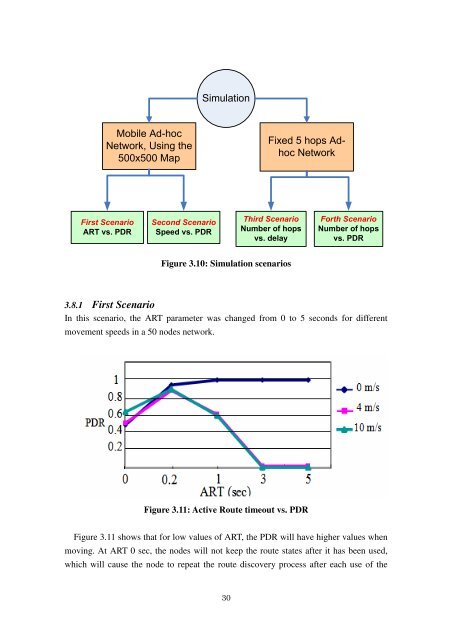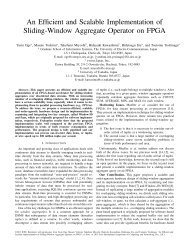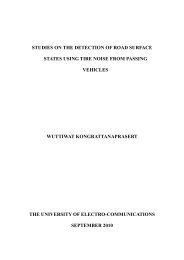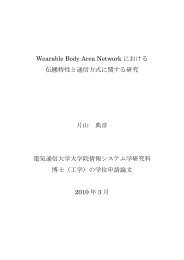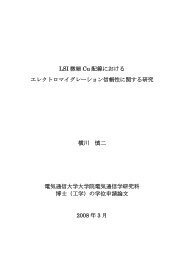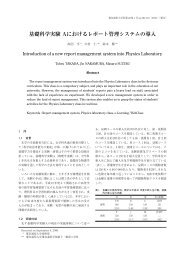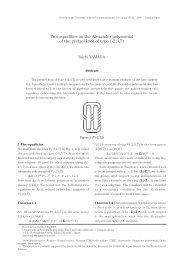a study on the spectrum efficient multi-hop wireless network
a study on the spectrum efficient multi-hop wireless network
a study on the spectrum efficient multi-hop wireless network
You also want an ePaper? Increase the reach of your titles
YUMPU automatically turns print PDFs into web optimized ePapers that Google loves.
Simulati<strong>on</strong><br />
Mobile Ad-hoc<br />
Network, Using <strong>the</strong><br />
500x500 Map<br />
Fixed 5 <strong>hop</strong>s Adhoc<br />
Network<br />
First Scenario<br />
ART vs. PDR<br />
Sec<strong>on</strong>d Scenario<br />
Speed vs. PDR<br />
Third Scenario<br />
Number of <strong>hop</strong>s<br />
vs. delay<br />
Forth Scenario<br />
Number of <strong>hop</strong>s<br />
vs. PDR<br />
Figure 3.10: Simulati<strong>on</strong> scenarios<br />
3.8.1 First Scenario<br />
In this scenario, <strong>the</strong> ART parameter was changed from 0 to 5 sec<strong>on</strong>ds for different<br />
movement speeds in a 50 nodes <strong>network</strong>.<br />
Figure 3.11: Active Route timeout vs. PDR<br />
Figure 3.11 shows that for low values of ART, <strong>the</strong> PDR will have higher values when<br />
moving. At ART 0 sec, <strong>the</strong> nodes will not keep <strong>the</strong> route states after it has been used,<br />
which will cause <strong>the</strong> node to repeat <strong>the</strong> route discovery process after each use of <strong>the</strong><br />
30


